For much of human history, wine was sweet. Winemakers didn’t have the knowledge to get wines to ferment out completely and so inevitably the result was sweet. And anyway, people like sweet things and, it could be said, some sweetness can cover up a number of faults. In the last twenty years, fashion has dictated that ‘sophisticated’ drinkers have dry palates; the very fine off-dry or medium wines of Germany and the Loire don’t get the recognition they deserve. But this trend also means that the fascinating and enormously varied world of sweet wine is rarely explored. Andover Wine Friends’ January tasting was an opportunity to put this right. In one evening we couldn’t do the whole range – no Tokay, no wines from Austria’s Burgenland or Germany – but we did get a good sense of some of the excellent range out there.
Tale of two Muscats
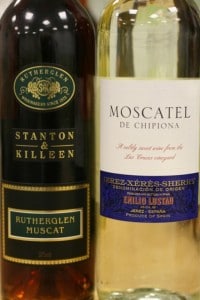 The Muscat grape, with its heady scents of flowers and, yes, grapes, is ideally suited to sweet wines. Here we tasted two styles which could not really have been more different. Moscatel de Chipiona, Emilio Lustau, made by the famous Sherry maker in Jerez, Spain, is a classic European aperitif. It is pale, smells of fresh grapes and confectionery, or perhaps even cheap perfume. It doesn’t have a huge amount of flavour but packs a punch at 15% alcohol. But at £5.50 for a half bottle you can’t really complain! By contrast Stanton & Killeen Rutherglen Muscat (Victoria, Australia, £10, 375ml) 17.5% is a minor classic. By comparison with its pale, nearly white, Spanish relative, it’s a deep red-brown in colour, with caramel, preserved fruit flavours and exotic burnt notes – Christmas pudding in a glass in the hot Australian sun?
The Muscat grape, with its heady scents of flowers and, yes, grapes, is ideally suited to sweet wines. Here we tasted two styles which could not really have been more different. Moscatel de Chipiona, Emilio Lustau, made by the famous Sherry maker in Jerez, Spain, is a classic European aperitif. It is pale, smells of fresh grapes and confectionery, or perhaps even cheap perfume. It doesn’t have a huge amount of flavour but packs a punch at 15% alcohol. But at £5.50 for a half bottle you can’t really complain! By contrast Stanton & Killeen Rutherglen Muscat (Victoria, Australia, £10, 375ml) 17.5% is a minor classic. By comparison with its pale, nearly white, Spanish relative, it’s a deep red-brown in colour, with caramel, preserved fruit flavours and exotic burnt notes – Christmas pudding in a glass in the hot Australian sun?
Two noble rotters
 If you are not going to fortify your wine to keep it sweet, the classic alternative is to allow Botrytis, ‘noble rot’, to attack fully ripe grapes on the vines in the early autumn. This has the double effect of concentrating flavours, necessary to match the sugar levels, and of introducing a unique set of flavours – marmalade and oatmeal anyone? Our two examples came from classic French regions. First a sort of junior Sauternes from nearby Monbazillac in the Bordeaux region: Domaine le Ancienne Cure, Monbazillac (2007,12.5%, £6.99 375ml). It has 10% Muscat in it, accompanying the Semillon, and rather surprisingly, no Sauvignon Blanc. It is a modest but true-to-type example: nice complex nose, not very rich on the palate, but sweet, pleasant and refreshing. The second example comes from Layon, a tributary of the Loire and is made from the Chenin Blanc grape: Domaine des Forges, Coteaux du Layon Chaume AC, 2009, 12%. This has a pronounced botrytis nose, of marmalade and hay, plus appley fruit and manages to combine a luscious sweetness and a great seam of refreshing acidity. And all this – plus the capacity to age for decades – for £9 for 500ml bottle. Is there a better value to be found in the world of wine?
If you are not going to fortify your wine to keep it sweet, the classic alternative is to allow Botrytis, ‘noble rot’, to attack fully ripe grapes on the vines in the early autumn. This has the double effect of concentrating flavours, necessary to match the sugar levels, and of introducing a unique set of flavours – marmalade and oatmeal anyone? Our two examples came from classic French regions. First a sort of junior Sauternes from nearby Monbazillac in the Bordeaux region: Domaine le Ancienne Cure, Monbazillac (2007,12.5%, £6.99 375ml). It has 10% Muscat in it, accompanying the Semillon, and rather surprisingly, no Sauvignon Blanc. It is a modest but true-to-type example: nice complex nose, not very rich on the palate, but sweet, pleasant and refreshing. The second example comes from Layon, a tributary of the Loire and is made from the Chenin Blanc grape: Domaine des Forges, Coteaux du Layon Chaume AC, 2009, 12%. This has a pronounced botrytis nose, of marmalade and hay, plus appley fruit and manages to combine a luscious sweetness and a great seam of refreshing acidity. And all this – plus the capacity to age for decades – for £9 for 500ml bottle. Is there a better value to be found in the world of wine?
Two passiti
Up and down the peninsula of Italy, from under the Alps to the sun-baked islands off Sicily, closer to Africa than to Rome, there is a tradition of making sweet wines by picking perfect, fully mature grapes and then
letting them dry out (appassire, literally‘to wither’) for three months. You then make wine from the semi-raisined grapes, a slow and tricky business. We had a white (or rather amber-gold) and a red example. The most famous version is Tuscany’s Vin Santo, which varies from terrible to sublime; this one is pretty obscure, made from the Albana grape in neighbouring Emilio-Romagna, Solara, Albana di Romagna Passito, 2003, Celli (12.5%, £14.75, 500ml). The colour is an absolute winner, orange-gold, then aromas of raisins and some wood on the nose; on the palate, moderately sweet, dried and fresh apricots, slightly woody and tannic. An interesting wine, worth a try, not the best but by no means the worst. Slightly more famous – but mostly because of its very famous relative, Amarone, is Recioto della Valpolicella Classico DOCG, Fabiano, 2007 (14%, £20 500ml). This is also a passito wine but made from mainly the Corvina grape, which produces both everyday Valpolicella and grand Amarone – surely the textbook example of how much depends on the way a wine is made and aged. The most prominent feature of this wine was the attractively ripe red cherry and plum nose, its freshness on the palate. Not overly sweet, it still needs more time to knit together.
Two traditional classics
The tasting concluded with an excellent Port and a venerable sweet Sherry. Warre’s bottle-aged, Late Bottled Vintage Port 2001 modestly proclaims on its packaging that this is the best LBV in the world, listing all the prizes it has won down the years. It is an intermediate style, having had four years plus in casks before another five in the bottle and does need decanting. (Most LBVs are barrel-aged, filtered, and bottled just before they’re sold for immediate drinking.) It has really excellent blackberry and strawberry fruit, is exhilaratingly fresh, sweet but with super counter-balancing acidity and full of grippy tannins. Best in the world or not, it is star wine and good value at £20 – I got it on offer for £15! Finally – and there is nowhere really to go after this – we had Antique Pedro Ximenez, Fernando de Castilla, Jerez DO, 15%. With the texture and some of the appearance of engine oil and the sweetness of black treacle, this 30-year-old wine is more of a sensation than a taste – luscious, thick, amazingly refined mouth-coating sweetness. The flavour is all there too – caramel, burnt notes, candied orange, coffee and more – but the texture is the lingering sensation. Sweet dreams indeed – find an excuse to drink or at least to taste these wines.
Footnote: by way of completeness I add another note on an Austrian sticky which could have made this line up: Feilinger Artinger Beerenauslese (ie individually selected botrytis affected berries) 2009 is good on the nose but outstanding on the palate – an exotic concoction of mango and ripe apples. Superb (£11, 375ml, Neusiedlersee, Austria, stocked by Waitrose). A very good use of otherwise dull Welschriesling, with some help from Chardonnay and Weissburgunder, ie Pinot Blanc.



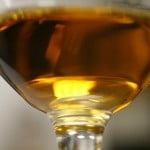
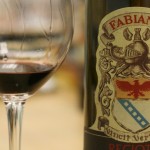

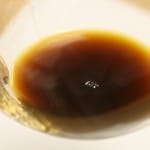
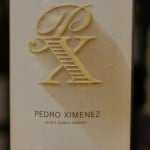

Comments are closed.